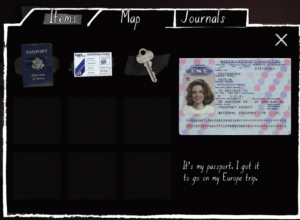Gone Home, developed by Fullbright and released in 2013 for platforms like Microsoft Windows, OS X, and Linux, and later for consoles, represents a significant moment in the evolution of the walking simulator genre. After an unsatisfactory experience with Journey, my approach to this genre was cautious, but Gone Home offered a refreshing and innovative take that piqued my interest.
Upon entering the Greenbriar family’s home after finding a hidden key, I was immediately drawn into the game’s rich narrative environment. Unlike many games where the story is told through direct dialogue or action sequences, Gone Home utilizes its setting—a seemingly ordinary house—as a narrative vessel. Each room and every object within it is thoughtfully placed, contributing fragments to the overarching story of a family’s complexities and hidden secrets. This method of storytelling is a classic example of Embedded Narratives, where the narrative elements are built into the environment itself, allowing the story to unfold organically as the player explores and interacts with these elements.
The choice of selective interactivity in Gone Home enhances this storytelling technique. While some objects are merely decorative, others are integral to unraveling the family’s saga, such as a scribbled note tucked away in a forgotten drawer or a hidden compartment revealing poignant letters. This approach not only adds depth and realism to the exploration but also mirrors the arbitrary nature of how we interact with spaces in real life. However, the inconsistency in which objects can be interacted with sometimes leads to confusion. A subtle indicator for interactable items could help maintain immersion without detracting from the player’s sense of discovery.

investigating a Christmas duck (which was pretty confusing but funny)
Gone Home uses the confined space of a single household to its advantage, making each interaction significant and filled with narrative potential. The house itself, with its silent walls and personal belongings, tells a story more intimate and detailed than many sprawling game worlds. The game’s ability to weave such a compelling narrative within this limited space exemplifies the power of embedded narratives to create deep, emotional connections with the characters. This is also punctuated by the various forms of information you are getting. Not only do you exist in a clearly lived-in space, but you also encounter documents that provides you with an even deeper story (pictured below).

Note found in bedroom

Documents found in backpack
The detailed and thoughtful design of Gone Home is pivotal in transforming simple interactions into a comprehensive storytelling experience. This approach to narrative design showcases that walking simulators are capable of delivering emotionally engaging stories that can rival those found in more action-oriented games. Gone Home not only transformed my expectations for what a walking simulator can achieve but also demonstrated the profound narrative possibilities within the genre. The game stands as a testament to the effectiveness of embedded narratives in video games, proving that a well-designed environment can be as compelling as traditional storytelling methods.
In conclusion, Gone Home has reshaped my view of walking simulators, offering a profound narrative experience that deepens with each interaction. By embedding its narrative directly into the game environment, it invites players to uncover the story at their own pace, promoting a form of engagement that is both intuitive and rewarding. This game not only solidified its importance within its genre but also deepened my appreciation for the narrative capabilities of video games, illustrating how thoughtful design can transform even the simplest settings into rich, immersive narrative experiences.




